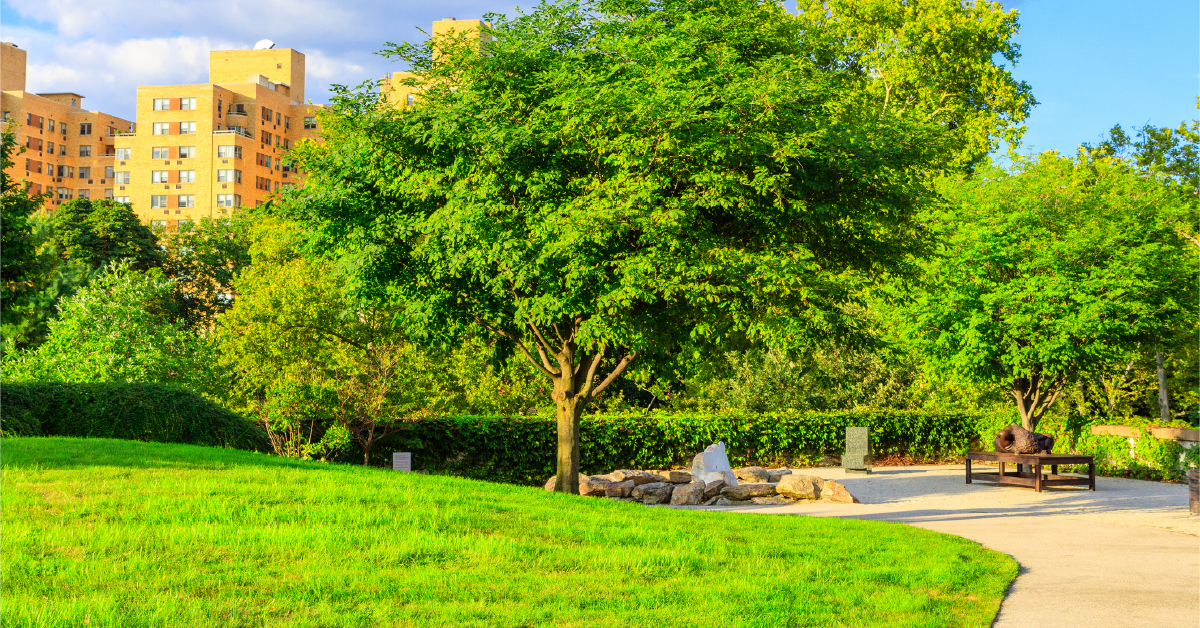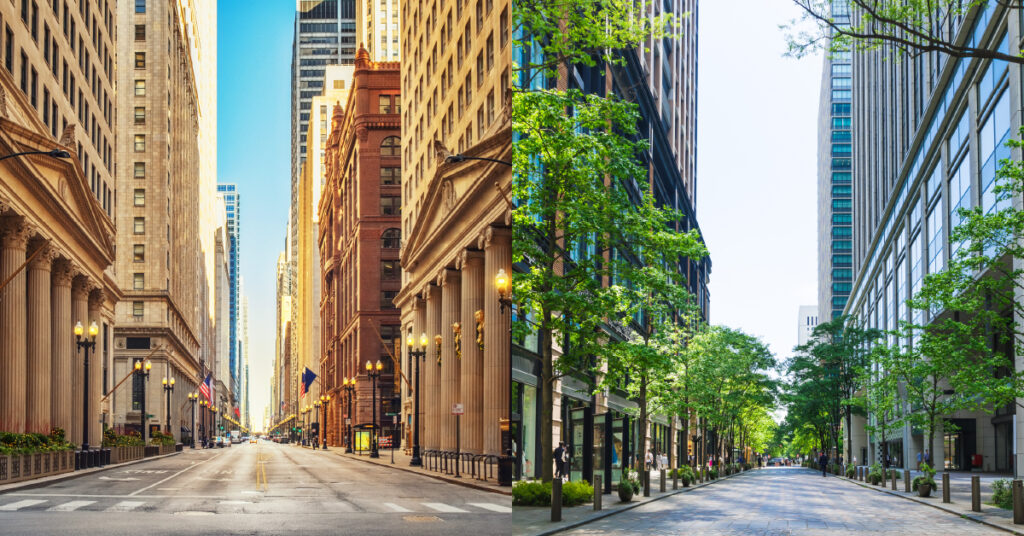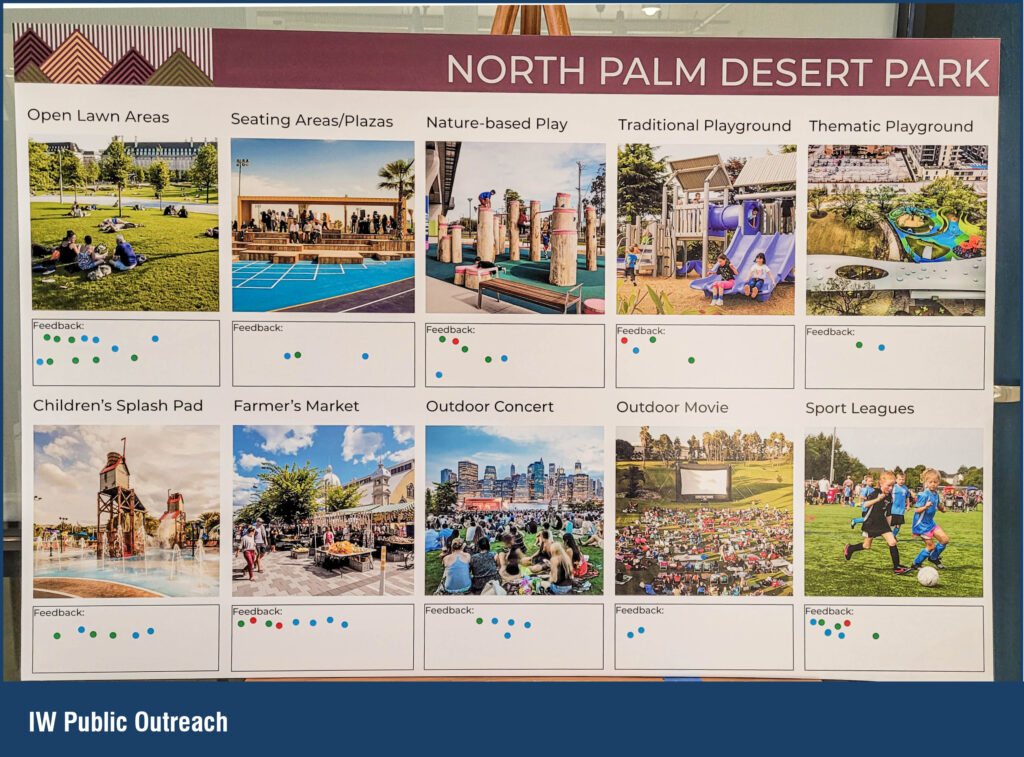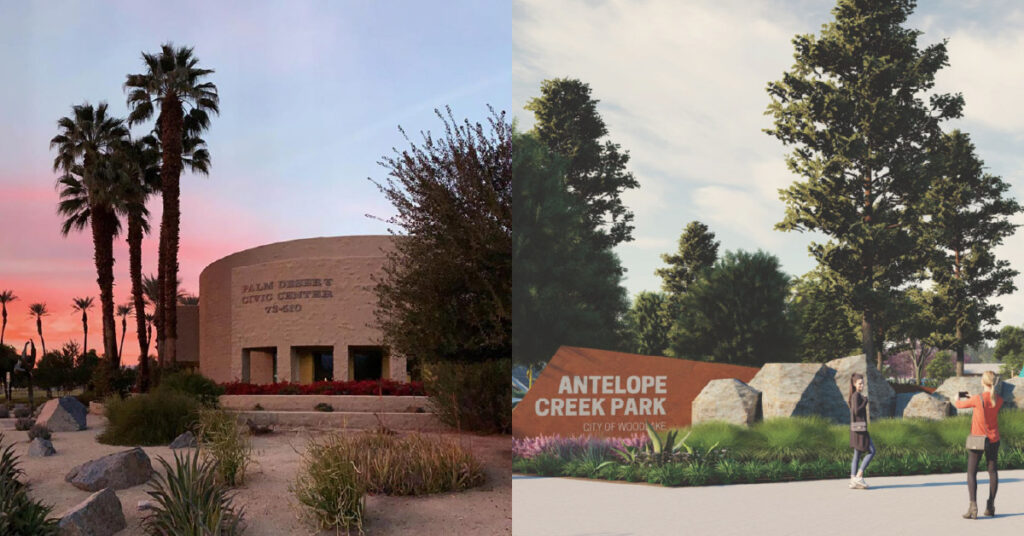
Resources and News 5 Reasons Landscape Architecture Should Be a Priority for Your City
June 24, 2025
Cities are living things, and a municipality’s health can be directly related to its infrastructure, population, storefronts, and — quite literally — the natural spaces that connect all of these elements. It’s these natural spaces that are worth moving to the top of your priority list. And that’s where Landscape Architecture and Urbanism comes in.
Whether you are a city or an elected official, understanding and championing Landscape Architecture and Urbanism, is crucial in shaping the future of your city and the key to creating vibrant, sustainable communities for years to come.
Whether you’re new to Landscape Architecture & Urbanism or have been spearheading its implementation for years, see how prioritizing natural infrastructure, sustainable water management, and biodiversity through landscape architecture can help you deliver resilience against environmental stressors while improving the quality of life for your residents.
Why is landscape architecture & urbanism so important?
Landscape Architecture & Urbanism, from a jurisdiction perspective, is a city planning approach that strategically integrates natural systems with urban infrastructure, creating a holistic environment where both interact and strengthen one another. While natural aesthetics are certainly ideal, landscape architecture goes far beyond traditional landscaping. This practice approaches cities as dynamic ecosystems where green spaces, water management, and built environments impact and strengthen each other.
As our cities face increasingly complex challenges from climate change, population growth, and resource scarcity, the importance of more sustainable and resilient urban development has never been greater.
Landscape urbanism offers a holistic solution to these challenges, creating spaces that:
- Safeguard infrastructure
- Improve public health
- Encourage community engagement
- Beautify our public spaces
- Support ecological functions
- And more

The benefits of Landscape Architecture & Urbanism
It bears repeating that Landscape Architecture & Urbanism tangible benefits extend far beyond aesthetic improvements. By supporting urban infrastructure with natural systems, you can face many of today’s challenges head-on and create more livable, sustainable communities across your municipality.
1. Environmental sustainability
Landscape Architecture & Urbanism plays a crucial role in promoting environmental sustainability within cities. By incorporating green infrastructure such as parks, urban forests, and bioswales, you can significantly improve your municipality’s ecological footprint.
Green spaces work for you around the clock, acting as natural air filters that mitigate the urban heat island effect and improve overall air quality. Professionally designed urban landscapes seamlessly enhance biodiversity, creating habitats for local flora and fauna next to the hustle and bustle of the city. And, once established, these areas support self-pollination and natural pest control.
2. Climate resilience
It’s getting harder to plan for the weather. While the sustained effects of climate change and extreme weather events intensify, urban landscape architecture will continue to prove to be an essential tool for increasing resiliency and stability.
Here’s how Landscape Architecture & Urbanism can help you prepare for the unknown.
- By integrating natural systems for flood management and stormwater control, you better manage increased precipitation and mitigate flooding risks.
- Creating green corridors and buffer zones provides natural climate adaptation mechanisms, such as shade and evaporative cooling, to reduce ambient temperatures while offering pleasant recreational spaces.
- Additional plants and trees can help you combat soil erosion, which is exacerbated by increased rainfall or drought conditions.
3. Public health and well-being
Landscape Architecture & Urbanism also makes a significant positive impact on public health and the well-being of your residents. Inviting, green spaces combat sedentary lifestyles and related health issues by providing fixed locations for recreation and physical activity.

Moreover, exposure to nature has been shown to promote mental health, reduce stress, and improve overall quality of life for people of all ages. Well-designed urban landscapes can thus serve as a cost-effective, active/passive public health support system for all members of your community.
4. Economic development
An investment in Landscape Architecture & Urbanism is a multi-pronged investment in economic development. Some of the economic benefits of high-quality green spaces include:
- Enhanced property values, which make the area more attractive to both businesses and residents.
- Increased tourism and recreation, bringing in visitors and stimulating local businesses.
- Creation of jobs in landscape architecture, urban planning, and related fields.
5. Community building
Perhaps one of the most significant benefits of this service is its ability to create spaces for communities to grow and thrive. These spaces can create a strong sense of place and community identity, organically promoting social interaction and engagement among your residents.
These spaces can also serve as outdoor classrooms for cross-generational environmental education and stewardship. By involving community members in the design and maintenance of these spaces, you can further strengthen social bonds and promote civic pride.
So, why aren’t green spaces in every community?
While Landscape Architecture & Urbanism offers numerous benefits, implementing these initiatives is not without its challenges.
Pressure to expand
Municipalities face constant pressure to expand, often at the expense of green spaces. When faced with these tough decisions, you must carefully balance short-term development gains against long-term environmental benefits. This requires innovative approaches to land use, zoning, and development that accommodate growth while preserving ecological integrity. If this is outside of your comfort zone, don’t hesitate to consult landscape architecture professionals for guidance and support.

Funding and resources
Securing funding and resources can be another hurdle, especially when budgets are tight and public scrutiny is high. And it’s no secret that landscape architecture projects often require substantial upfront investment and ongoing maintenance costs. These projects are often made possible through diverse funding sources, including grants and public-private partnerships.
But don’t lose sight of the long-term cost savings and economic benefits these projects can offer.
Successful implementation of landscape architecture projects is driven by strong community support and stakeholder engagement. Be sure to prioritize transparent, inclusive processes throughout planning and implementation, including such tactics as:
- Conducting public consultations
- Collaborating with local groups
- Addressing concerns
- Incorporating community feedback
- Educating the public about project benefits
- Involving residents in ongoing maintenance and stewardship
By navigating these challenges with vision and persistence, you can pave the way for transformative initiatives that benefit your municipality for years, if not generations, to come.
Making green spaces possible
The implementation of Urban Landscape Architecture principles is transforming communities across California, creating vibrant public spaces that enhance quality of life and promote environmental sustainability. Two notable projects currently in development by Interwest and Calvin, Giordano & Associates, Inc. (CGA), part of the SAFEbuilt family of companies, showcase the potential of this approach.
North Sphere Regional Park, Palm Desert
In Palm Desert, the North Sphere Regional Park project exemplifies how Urban Landscape Architecture can create multifunctional spaces that serve community needs while promoting environmental stewardship. As part of the Millennium Specific Plan, this regional sports park aims to provide new recreational opportunities for the thriving Coachella Valley community.
Antelope Creek Park, Woodlake
In Woodlake, the Antelope Creek Park project demonstrates how Urban Landscape Architecture can transform underutilized spaces into community hubs. This 20-acre development will convert an existing olive grove into a regional destination, offering a wide array of recreational and educational facilities.

The power of Proposition 68
Both of these projects are funded through Proposition 68, the California Drought, Water, Parks, Climate, Coastal Protection, and Outdoor Access for All Act of 2018, which aims to create financial resources for parks in urban and historically disadvantaged communities. This funding mechanism highlights how policy initiatives can support the implementation of Urban Landscape Architecture projects, making them accessible to a wider range of California communities.
Strengthen your municipality with Urban Landscape Architecture
At the heart of our approach is a commitment to collaboration. We work closely with you, elected officials, city staff, and community stakeholders, to foster open communication and flexibility necessary to adapt to changing needs.
Our team emphasizes community engagement and public outreach to build consensus and ensure project success well beyond project completion. By combining our technical expertise with a deep understanding of local communities, we help municipalities like yours create urban landscapes that enhance quality of life, promote sustainability, and leave a lasting positive impact.
Please check this guide we created to untap your city’s potential. Let’s bring your vision to life.

